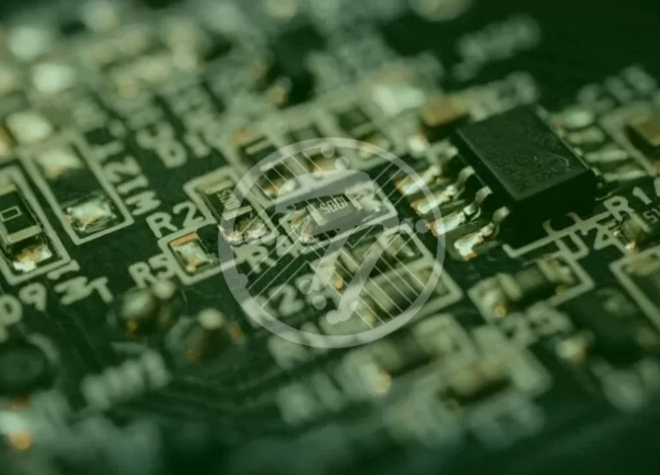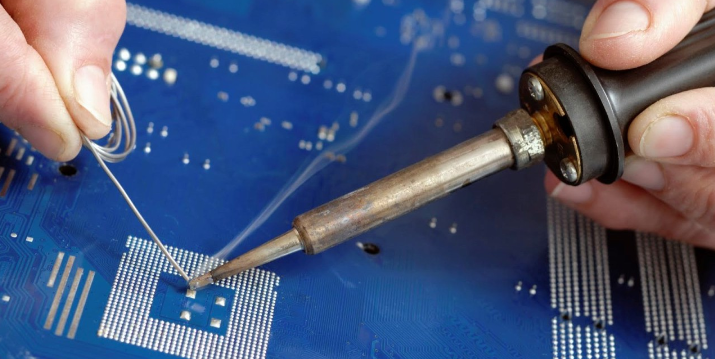Common Causes and Solutions for Poor Solderability in PCB Design and Manufacturing
Introduction
Solderability issues in printed circuit board (PCB) manufacturing represent one of the most common yet challenging problems faced by electronics designers and production engineers. Poor solderability can manifest in various forms – from incomplete wetting and dewetting to solder balling and tombstoning – each capable of compromising the reliability and functionality of electronic assemblies. This paper examines the root causes of solderability problems in PCB fabrication and assembly processes, analyzes their mechanisms, and provides practical solutions to prevent these issues in modern electronics manufacturing.

Section 1: Material-Related Causes of Solderability Problems
1.1 PCB Surface Finish Quality
The surface finish of PCB pads plays a critical role in solder joint formation. Common finishes include:
- HASL (Hot Air Solder Leveling): Uneven thickness or oxidation can lead to poor wetting
- ENIG (Electroless Nickel Immersion Gold): Black pad syndrome or excessive phosphorus content in nickel layer
- OSP (Organic Solderability Preservative): Degradation due to excessive heat exposure or shelf life expiration
- Immersion Silver/Tin: Tarnishing or whisker formation affecting solderability
1.2 Copper Pad Oxidation and Contamination
Copper surfaces oxidize rapidly when exposed to air, forming copper oxides that resist solder wetting. Other contamination sources include:
- Finger oils from handling
- Residual flux from previous processes
- Chemical contamination from fabrication processes
- Sulfur-containing compounds in industrial environments
1.3 Solder Material Issues
The solder alloy itself can contribute to poor soldering performance:
- Improper alloy composition (e.g., incorrect silver content in SAC alloys)
- Contamination with other metals (e.g., copper dissolution in wave soldering pots)
- Oxidation of solder particles in paste formulations
- Expired or improperly stored solder paste
Section 2: Design-Related Solderability Problems
2.1 Pad Geometry and Layout Considerations
PCB design choices significantly impact solder joint quality:
- Thermal imbalance: Unequal heat dissipation leads to tombstoning in chip components
- Pad size mismatches: Oversized pads may cause solder balling; undersized pads result in weak joints
- Insufficient spacing: Bridging between adjacent pads due to inadequate clearance
2.2 Copper Distribution and Thermal Relief
Improper copper balancing creates several issues:
- Uneven heating during reflow causing skewed components
- Solder wicking away from joints along thermal vias
- Warpage due to asymmetric copper distribution
2.3 Solder Mask Design Flaws
Solder mask application problems include:
- Solder mask defined (SMD) pads with excessive coverage
- Solder mask encroachment on pad surfaces
- Incomplete curing leading to outgassing during soldering
Section 3: Process-Related Solderability Issues
3.1 Soldering Temperature Profile Problems
Inappropriate thermal profiles cause numerous defects:
- Insufficient peak temperature: Incomplete solder melting and poor intermetallic formation
- Excessive temperature: Flux burnout before proper wetting occurs
- Improper ramp rates: Component damage or solder splatter
- Inadequate time above liquidus: Poor wetting and void formation
3.2 Flux Application and Activity
Flux-related problems include:
- Insufficient flux coverage in wave soldering
- Flux activity mismatch with surface conditions
- Flux spattering due to improper application methods
- Flux residues causing post-assembly corrosion
3.3 Handling and Storage Conditions
Environmental factors affecting solderability:
- Moisture absorption leading to popcorning during reflow
- Excessive humidity accelerating oxidation
- High temperatures degrading OSP coatings
- Extended storage periods beyond material specifications

Section 4: Diagnostic Methods for Solderability Problems
4.1 Visual Inspection Techniques
Standard assessment methods include:
- Wetting balance tests for quantitative solderability measurement
- Solder spread tests for qualitative evaluation
- Microscopic examination of joint formation
- Cross-sectional analysis of intermetallic layers
4.2 Advanced Analytical Techniques
Sophisticated diagnostic tools:
- SEM/EDS for surface composition analysis
- X-ray fluorescence for coating thickness measurement
- FTIR spectroscopy for organic contamination detection
- Thermal imaging for process monitoring
Section 5: Prevention and Solution Strategies
5.1 Design for Manufacturing (DFM) Guidelines
Preventive design measures:
- Balanced thermal mass around components
- Appropriate pad geometries for target components
- Proper spacing considering solder mask registration tolerances
- Copper balancing to prevent warpage
5.2 Process Optimization Techniques
Manufacturing improvements:
- Development of optimized reflow profiles for specific assemblies
- Implementation of nitrogen reflow for oxidation-sensitive finishes
- Regular maintenance of wave solder equipment
- Solder paste viscosity monitoring and management
5.3 Material Selection and Handling
Best practices for materials:
- Proper storage conditions for PCBs and components
- First-in-first-out (FIFO) inventory management
- Selection of appropriate surface finishes for application requirements
- Qualification testing of new material combinations

Section 6: Emerging Challenges and Future Trends
6.1 Lead-Free Soldering Considerations
Modern challenges include:
- Higher process temperatures affecting material stability
- Increased sensitivity to process variations
- Compatibility issues with certain surface finishes
6.2 Miniaturization Effects
Trend-related difficulties:
- Finer pitch components requiring precise solder volume control
- Increased sensitivity to void formation
- Challenges in solder mask application for ultra-fine features
6.3 Advanced Packaging Technologies
New assembly methods bringing new concerns:
- Soldering challenges with 3D packages and PoP configurations
- Low-temperature solders for heat-sensitive components
- Mixed alloy systems in multi-stage assembly processes
Conclusion
Poor solderability in PCB manufacturing stems from complex interactions between material properties, design decisions, and process parameters. Effective prevention requires a systematic approach encompassing proper material selection, optimized PCB design, controlled manufacturing processes, and rigorous quality control measures. As electronic assemblies continue evolving toward higher complexity and miniaturization, maintaining robust solderability will demand increased attention to detail at every stage of product development and production. By understanding the root causes outlined in this paper and implementing the recommended solutions, manufacturers can significantly reduce solderability-related defects and improve overall product quality and reliability.







